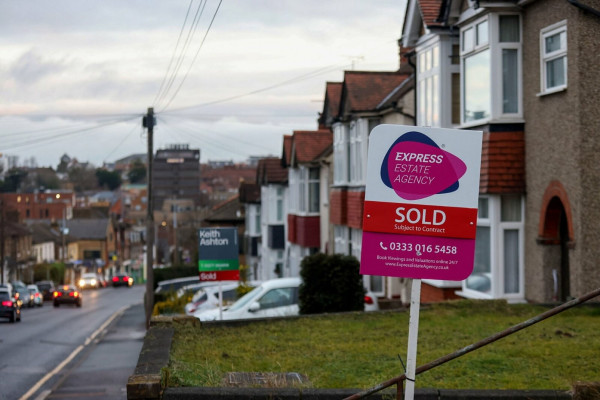

Product choice in the buy-to-let market is recovering but the impact from September’s “mini” Budget still persists, with fewer options to choose from than before.
There are now 300 fewer buy-to-let products available on the market than there were at the beginning of September, according to the latest figures from Moneyfacts.
Overall buy-to-let product availability, including both fixed and variable products, has risen by more than 700 options since the beginning of September when available products plummeted from 2,075 to 988.
The average fixed rates rose over the same period, for both a two-year and five-year fixed rate.
As of November 25, the average two-year fixed rate across all loan-to-values sat at 6.50 per cent, an increase of 0.93 percentage points from October 1 when it sat at 5.57 per cent.
Moneyfacts finance expert, Rachel Springall noted that the buy-to-let sector has faced “notable market turmoil” and said it was positive to see product choice gradually return since the start of last month.
Product numbers | 1-Oct-22 | 25-Nov-22 | Difference |
BTL product count (fixed and variable) | 988 | 1769 | 781 |
Two-year fixed rate BTL all LTV’s | 183 | 442 | 259 |
Two-year fixed rate BTL at 60% LTV’s | 35 | 72 | 37 |
Two-year fixed rate BTL at 75% LTV’s | 84 | 223 | 139 |
Five-year fixed rate BTL all LTV’s | 375 | 632 | 257 |
Five-year fixed rate BTL at 60% LTV’s | 36 | 82 | 46 |
Five-year fixed rate BTL at 75% LTV’s | 197 | 327 | 130 |
Average rates | 1-Oct-22 | 25-Nov-22 | Difference |
Two-year fixed rate BTL all LTV’s | 5.57% | 6.50% | 0.93% |
Two-year fixed rate BTL at 60% LTV | 4.52% | 6.27% | 1.75% |
Two-year fixed rate BTL at 75% LTV | 5.41% | 6.53% | 1.12% |
Five-year fixed rate BTL all LTV’s | 6.05% | 6.42% | 0.37% |
Five-year fixed rate BTL at 60% LTV | 4.26% | 5.94% | 1.68% |
Five-year fixed rate BTL at 75% LTV | 6.04% | 6.55% | 0.51% |
Source: Moneyfacts.co.uk
“A rise in choice could indicate an encouraging sentiment across lenders that appear to be adjusting their ranges to cater to landlords searching for a new deal,” Springall explained.
Despite the rebound in product choice, Springall pointed out that “landlords will be paying higher interest rates than if they secured a deal just eight weeks ago”.
Further fall expected
According to Springall, there are high expectations that interest rates will come down in the weeks ahead.
Because of this, it would not be “too surprising if landlords wait a little longer before they refinance, particularly as we approach the end of the year”.
Springall added: “Prospective landlords assessing the potential returns by investing in buy-to-let may be concerned about their profit margins due to rising interest rates and the cost of living.
“Any investor will need to carefully balance their rental expectations amid rising costs as it is difficult to tell how investors could be impacted moving into 2023.
"However, since January 2020, rents have risen 19 per cent across Great Britain, equating to an extra £2,351 a year for tenants, according to a study by Hamptons.”
In addition to rising rates, brokers have previously expressed frustration over high stress tests from lenders in the buy-to-let sector.
Earlier this month, FTAdviser reported that mortgage brokers wanted to see greater innovation from lenders “before things get worse”.
Mortgage brokers have previously highlighted that buy-to-let investments are becoming untenable without large rent increases for new investors.
jane.matthews@ft.com




